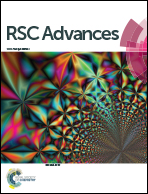A non-invasive approach to explore the discriminatory potential of the urinary volatilome of invasive ductal carcinoma of the breast†
Abstract
Worldwide, breast invasive ductal carcinoma (IDC) accounts for the majority of the reported cases of this form of cancer. IDC effective management, as for any form of cancer, would greatly benefit from early diagnosis. This, however, due to various socio-economic reasons, is very far for the reality in developing countries like India, where cancer diagnosis is often carried out at late stages when disease management is troublesome. With the present work, we aim to evaluate a simple analytical methodology to identify a set of volatile organic compounds (VOCs) in urine samples, as a biosignature for IDC. Using solid-phase microextraction followed by gas chromatography/mass spectrometry, a panel of 14 urinary VOCs was found to discriminate IDC (n = 65) from a healthy control (HC) group (n = 70) through multivariate statistical treatments. Furthermore, metabolic pathway analysis revealed various dysregulated pathways involved in IDC patients hinting that their detailed investigations could lead to novel mechanistic insights into the disease pathophysiology. In addition, we validated the expression pattern of five of these VOCs namely 2-ethyl-1-hexanol, isolongifolenone, furan, dodecanoic acid, 2-methoxy-phenol in another external cohort of 59 urinary samples (IDC = 32 and HC = 27) and found their expression pattern to be consistent with the primary sample set. To our knowledge, this is the first study exploring breast IDC volatome alterations in Indian patients.



 Please wait while we load your content...
Please wait while we load your content...